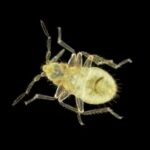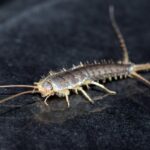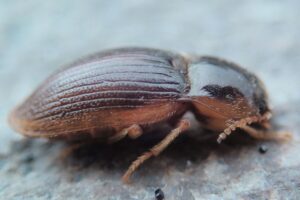The kitchen is one of the dirtiest places in many homes. It can be a breeding ground for germs and pests. Among others, some that you will most commonly see are tiny brown bugs. What are they? How do you get rid of these bugs?
The most common tiny brown bugs in the kitchen are:
- Flour mites
- Weevils
- Foreign grain beetle
- Rice moth
- Drugstore beetle
- Spider beetle
- Indian meal moth
Having tiny brown bugs in the kitchen can be a nuisance. The best solution is to keep the pantry and other areas clean. Also, it is a good idea to transfer foods in plastic or paper to containers with a lid. Natural solutions such as vinegar, bay leaves, and essential oils can also prevent bugs.
Read on to learn more about the tiny brown bugs in the kitchen, including their physical characteristics for easy identification. Even better, we’ll talk about some of the most effective strategies for getting rid of these pesky bugs.
What Are the Tiny Brown Bugs in Kitchen?
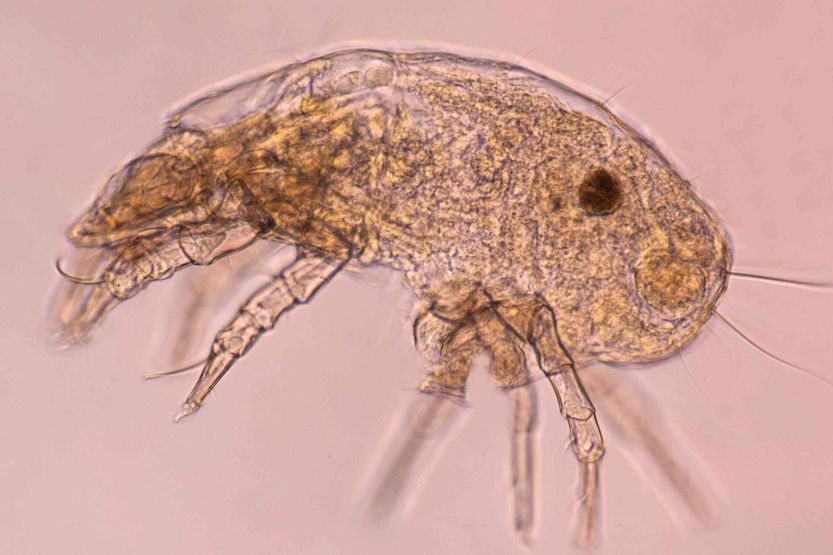
For many people, the initial reaction upon seeing little brown bugs in the kitchen is to panic. They can be a nuisance. Not to mention, they can compromise cleanliness and safety, especially food.
Once you see bugs, it is important to look closer for easy identification. After knowing what kind of bug it is, you can learn how to eradicate them and make your kitchen cleaner.
Below, we look at some of the most common tiny brown bugs that thrive in the kitchen:
1. Flour Mites
Also Called Grain Mites
Also called grain mites, flour mites are tiny, making them difficult to see. They are some of the most common pests in the kitchen or pantry. They infest a wide array of foods, including:
- Corn
- Cheese
- Cereals
- Dried fruits
- Flour
Size
The flour mite is a member of the Acaridae family. The length ranges from .33 to .66mm. Hence, they are often too tiny for the naked eye to detect. Nonetheless, you can spot their presence in food quickly when they infest in clusters.
Appearance
While many are brown, some can also range from white to gray. They have clawed legs with colors darker than their bodies.
How Do You Know If You Have Flour Mites in the Kitchen
One of the first indications of these tiny brown bugs on the kitchen counter is the presence of fine dust. When the dust moves, they are likely flour mites. You can put a flashlight on the area to have a clearer view of the supposed movement.
Another thing that you can do is to take a pinch of flour in your fingers. Roll your fingers lightly and smell the flour. If it is minty, it can signify that there are flour mites.
2. Weevils

Part of the Beetle Family
A part of the beetle family, weevils make up 40% of the world’s insects. They thrive in many places, including kitchens and pantries. They have long snouts, which is one thing that differentiates them from other beetles.
Three Common Types of Weevils in the Kitchen
Three main types of weevils can show up in the kitchen:
- Rice weevil
- Wheat or granary weevil
- Maize weevil
Hard to Detect
With the size of these tiny brown bugs, they are pretty difficult to detect. Hence, in most instances, it is too late before you can act to control the damage they have caused in the kitchen.
Affects the Quality of Produce
Nonetheless, while these tiny brown bugs on the kitchen countertop, pantry, and other kitchen areas are pesky, they do not carry diseases. But this does not mean that they won’t be a problem. They will affect the quality of produce.
Check the Food Before Buying
Weevils do not start indoors. Instead, they are from the outdoors. They can enter your home through contaminated food. Alternatively, they can also fly into the kitchen. Plus, they can lay their eggs on dry items. So, the food you brought possibly already had weevil before entering your household.
How Do You Know If You Have Weevils in the Kitchen
One of the best ways to identify the presence of weevils in the kitchen is to look at rice or other grains. Females are known for using their mandibles to chew kernels when laying an egg. They can quickly destroy grains since many weevils will lay up to 400 eggs.
3. Foreign Grain Beetle
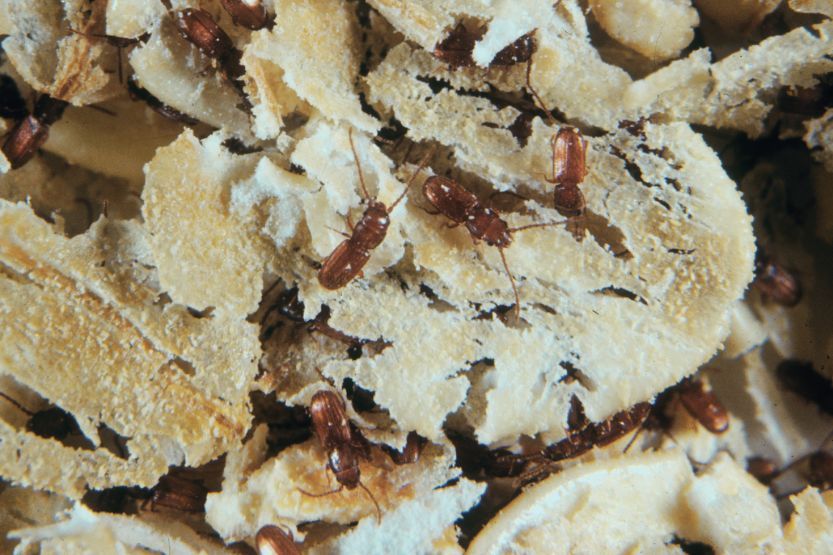
Size and Appearance
A small and flat insect with an average length of 1/12 inch, the foreign grain beetle, can range from brown to red.
Upon close inspection in a microscope, you will see that it has two peg-like projections at the back of the head. However, they are almost invisible to the naked eye, making their identification challenging.
They can be confused with many other insects. For instance, some people might think they are fruit flies or gnats. However, foreign grain beetles are different because they have a hard outer shell. They can also be confused with lice and fleas, but these insects do not have wings.
Thrive in Damp Areas with Fungus
Foreign grain beetles thrive in damp areas with fungus, which are common in the kitchen. Their reproduction requires at least 65% humidity. They will also feed on moldy and damp products, which is why they are among the most famous tiny brown bugs in kitchen cupboards.
Easy to Eliminate
While they can reproduce in large numbers within a short time, the good news is that it is also quick to eliminate them. When the humidity falls below 60%, they will die and disappear, even without you doing anything else.
Even if foreign grain beetles can be a nuisance, note that they are not harmful to humans since they do not bite. Additionally, they will not infest furniture.
4. Rice Moth
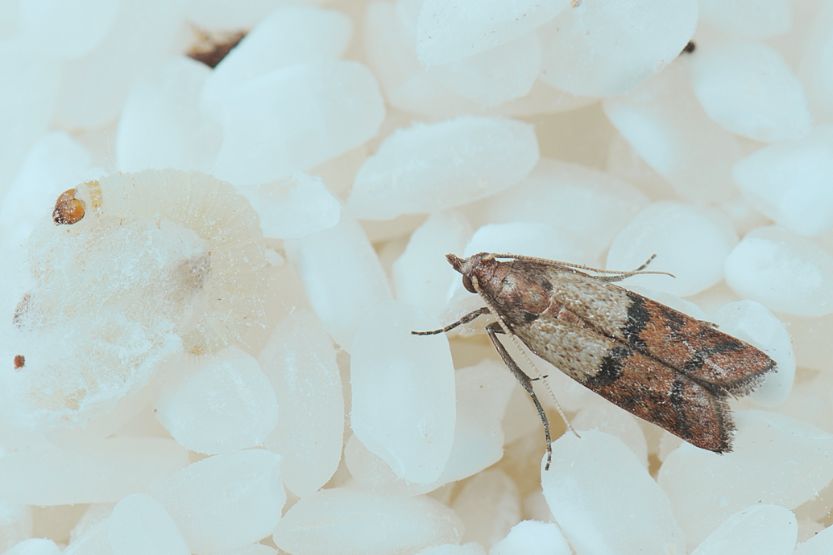
Common Hosts of Rice Moth
Rice, cereals, nuts, milled spices, and dried fruits are some of the most common hosts of rice moths. They are pale and buff-brown. They are uniform throughout the body with no markings. The hind wings are more translucent, and the veins look dark.
Reproduction
The attack of rice moths in the kitchen will start by laying up to 160 eggs. These eggs are on or near food sources.
It is followed by the larval stage, which can last up to 20 days if the condition is favorable for their growth. Next, it is followed by forming a strong web when the moth pupates, lasting up to ten days.
Appearance
While it is included on our list, note that their actual color may not be brown. The wings are gray, and the back is coppery or reddish, making the rice moth look brown.
How Do You Know If You Have Rice Moths in the Kitchen
Rice moths can lay their eggs on packaged foods. This means they might be present in some items before you bring them home. One of the most common signs of their infestation is the development of molds.
There can also be white droppings on rice or other grains. These are feces. Additionally, they can damage storage containers, especially those made of weak materials.
Again, what are the tiny brown bugs in the kitchen? Collectively, these tiny brown bugs, which are usually beetles or weevils, are called pantry bugs. They are hard to spot due to their size.
5. Drugstore Beetle
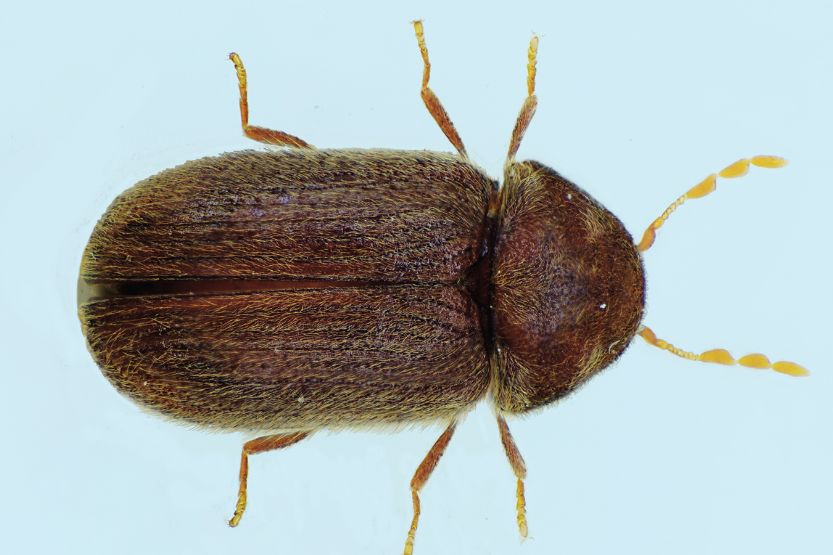
Size and Appearance
A pest in stored products, drugstore beetles are uniform brown to reddish-brown. Adults have a length of 1/10 to 1/7 inch with cylindrical bodies. Additionally, their wing covers have longitudinal fine hair rows. Their physical appearance is like cigarette beetles.
What Do Drugstore Beetles Eat
Some of the most common items in the kitchen that these tiny brown bugs infest include the following:
- Wheat
- Flour
- Cornmeal
- Paprika
- Peanuts
- Almonds
- Powdered milk
- Coffee beans
- Spaghetti
- Instant chocolate
Common Hiding Spots
The most common place where you will find these bugs in the kitchen is in the pantry since they attack mostly food items. Meanwhile, they can also be present in the kitchen window. These bugs can fly through open spaces and are attracted to light. They can be a problem even outside the kitchen.
Reproduction
Adult beetles will lay their eggs on food. After this, the larvae will hatch, eat, and grow. This will last a few months. After which, it will create a silken cocoon as it grows. The larva will take up to two weeks inside the cocoon before transforming into an adult.
6. Spider Beetle
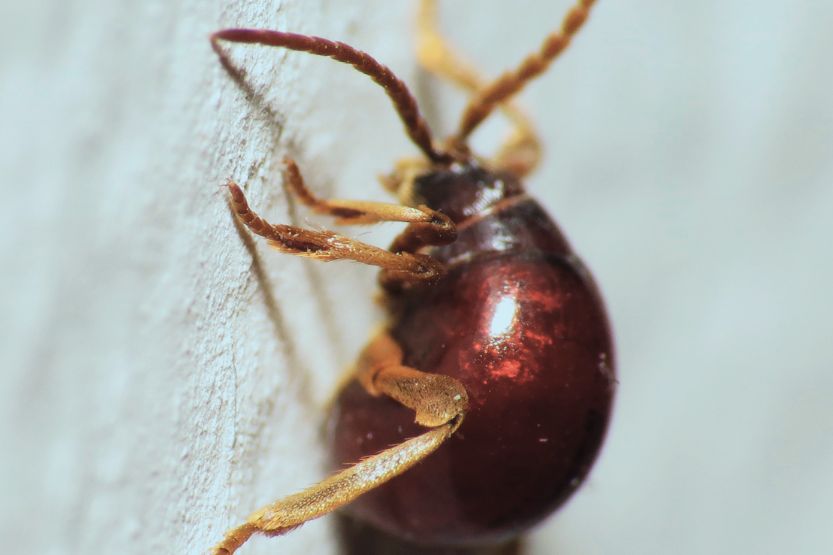
Size and Appearance
On average, spider beetles are 2 to 5 mm with cylindrical or oval bodies and long legs. They also have large and rounded abdomens. Some species look like spiders, which is where this household pest got its name.
Most Common Species of Spider Beetle
Below are some of the most common species of the spider beetle:
- American spider beetle
- White-marked spider beetle
- Smooth spider beetle
Prefers Dark and Moist Areas
While there are different species, they are almost identical in their life history. They are most active in dark locations. These little brown bugs in the kitchen at night can remain active even when it is cold. They also prefer places with high moisture, where they can wreak the most severe damage.
How Do You Know If You Have Spider Beetle in the Kitchen
Because most of their activities happen in the dark, detecting spider beetles can be challenging. Among others, one of the things to look for is an adult spider beetle or a cocoon. Also, watch out for granular materials they might leave next to the infesting food supplies.
7. Indian Meal Moth
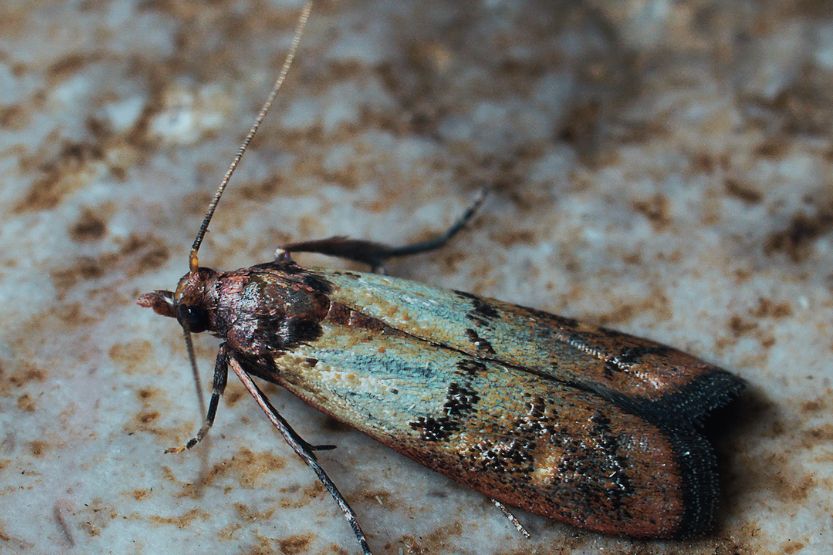
Size
Larger than most of the brown bugs mentioned in this article, the Indian meal moth can be easier to identify. Adults can be up to 5/8 inches. These bugs can enter your home through contaminated packages. The infestation can move from one package to another in the cupboard.
How Do You Know If You Have Indian Meal Moth in the Kitchen
If you are unsure if the Indian meal moth is the culprit, look for worm-like larvae or webbing. Although, such can be like the damage other tiny brown bugs in the kitchen can cause.
Moths can also fly around in the kitchen or other house areas. They can also leave feces and cast skins.
How Do You Get Rid of Window Bugs?
How to Get Rid of Tiny Brown Bugs in Kitchen
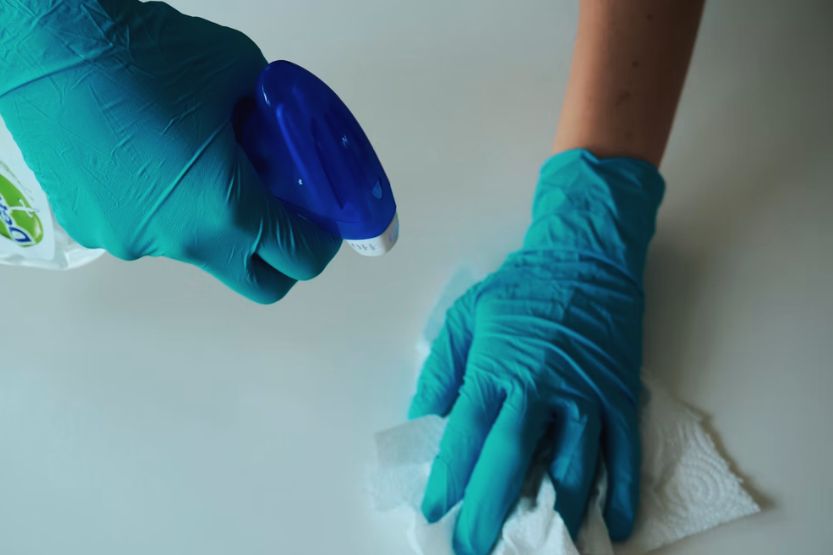
Below are some of the most effective solutions to eliminate tiny brown bugs in the kitchen sink, cupboard, counter, or other areas. Many of these are also applicable if you seek solutions to remove mites in the kitchen:
1. Clean Your Kitchen
The most effective solution for eliminating tiny brown bugs in the kitchen is to keep the area clean. Doing so will eliminate bugs and other pests that can be a headache in the kitchen, including ants.
Bugs will thrive in dirty environments. So, the cleaner your kitchen is, the lesser the chance that the bugs will be a nuisance.
Keep the sink free of dirt and residual food particles after washing the dishes. Wipe the counter all the time. Pay attention to the garbage disposal and trash bin. Make sure to avoid the dark areas you often tend to ignore.
The pantry is one more area that you should keep clean. Make it a routine to declutter, removing foods you are no longer using. The same thing is true with the kitchen drawers.
2. Keep the Kitchen Dry
Aside from dirt, moisture is another common problem in the kitchen. It increases the humidity, making it another culprit for the proliferation of tiny brown bugs.
From steaming food to boiling water, many kitchen activities contribute to moisture. Even external conditions can make the kitchen moist.
Among others, one of the most effective ways to combat moisture in the kitchen is to ensure good airflow. This is possible by installing an exhaust, such as in the range hood.
Having enough air circulation can help counter bugs. You can also line shelves with paper, which will effectively absorb moisture. Another thing that can help is frequently wiping surfaces, especially those that often get wet.
3. Store Your Stuff Properly
Improper storage of food items in the kitchen and pantry is one thing you can blame for the appearance of brown and tiny white bugs. An easy solution is to ensure proper storage to limit the possibility of having pesky bugs.
If possible, transfer items in a container instead of retaining them in their original packaging. Whether it is rice, flour, cereals, or other food items that can attract bugs, keeping them in a container with a closed lid will prevent the entry of bugs. Kitchen pests can easily infiltrate papers and plastics.
4. Consider Natural Solutions
Do not use chemicals if you want to eliminate tiny brown bugs in the kitchen. Instead, below are some of the most promising natural and non-toxic solutions:
- Use one-part vinegar and one-part water when cleaning the pantry or kitchen. Vinegar has natural properties that will act as a repellent, preventing the bugs from returning.
- Putting bay leaves in the pantry can also work. Aside from bugs, they can also deter other pantry insects, such as cockroaches, moths, ants, and flies.
- Create a homemade bug spray. Mix essential oil like lemongrass, peppermint, citrus, citronella, tea tree, and catnip with water. Spray them regularly in the kitchen, but make sure that you do not apply them directly to food items.
How Do I Get Rid of Little Black Bugs in My Kitchen Cupboards?
Frequently Asked Questions – Tiny Brown Bugs in Kitchen
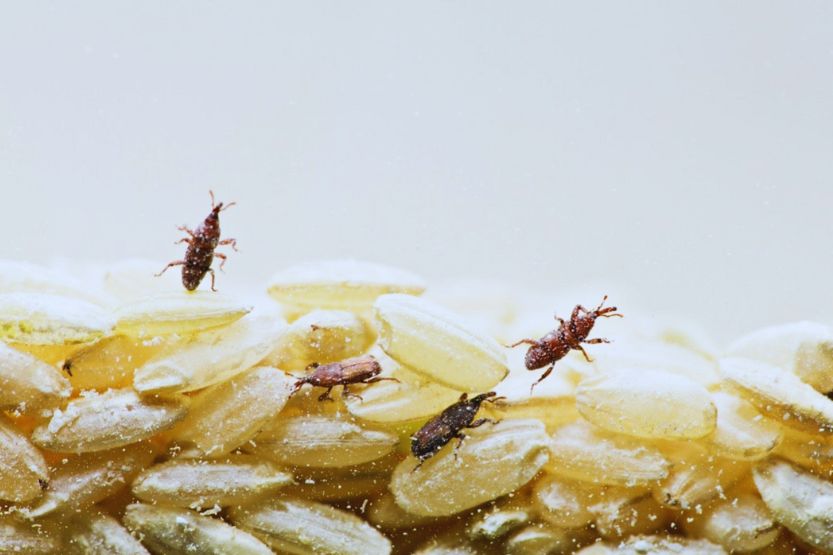
Do Tiny Brown Bugs in the Kitchen Bite?
In most cases, the tiny brown bugs in your kitchen will not bite. They are not harmful to humans. Most of their effect is in food.
They can destroy packaging, creating a mess in the kitchen or pantry. More so, they can develop holes and make pantry staples dirty; hence, they will not be fit for human consumption.
Will Brown Bugs Contaminate Food?
Yes, the brown bugs in the kitchen can cause food contamination. They have droppings or feces, which can be dangerous to food items.
They can also cause molds in food, affecting taste and safety. A bug or two won’t hurt when accidentally ingested, but they can be risky once out of control.
What Food Attracts Bugs in the Pantry?
Some of the most common foods that can attract bugs in the pantry or kitchen are the following:
- Rice
- Cereals
- Dried fruits
- Nuts
- Spices
- Flours
How Do Tiny Brown Bugs Enter the Kitchen?
The mode of entry of kitchen bugs will differ depending on the specific type of bug. The most common would be contaminated food. Before bringing some items into the kitchen, there can already be eggs, larvae, or adult bugs inside them. Also, open windows and sinks can bring bugs in.
In Closing – Tiny Brown Bugs In Kitchen: What Are They and How to Get Rid of Them
Have you seen tiny brown bugs in the kitchen? The first thing to do is to identify them. They can be one of the following:
- Flour mites
- Weevils
- Foreign grain beetle
- Rice moth
- Drugstore beetle
- Spider beetle
- Indian meal moth
The best solution for getting rid of these bugs is to keep the kitchen clean. Dealing with moisture is also recommended, as it will make the environment less ideal for these kitchen pests.
Another thing to do is transfer food items to containers the bugs cannot infiltrate. There are also promising natural solutions, including vinegar and bay leaves.
Read next:



![Tiny Bugs in Bed [Not Bed Bugs] - What Are They? Tiny Bugs in Bed](https://homecarezen.com/wp-content/uploads/2022/01/tiny-bugs-in-bed-150x150.jpg)
